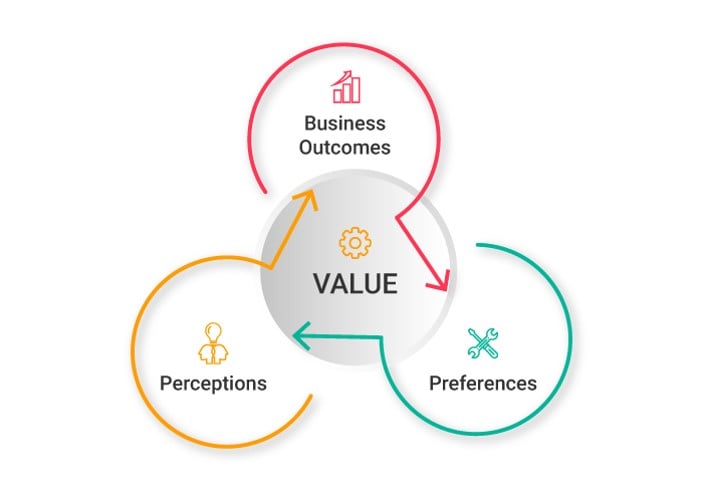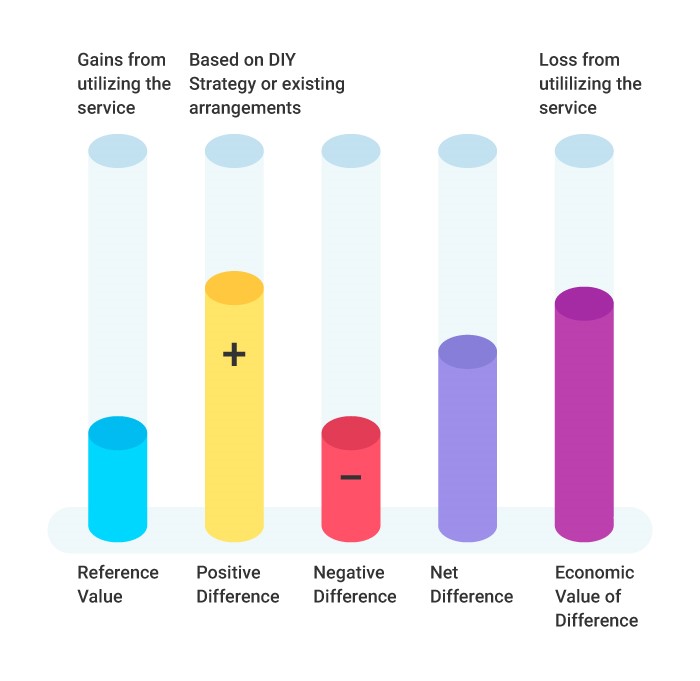
The value of a service comes from what it enables someone to do and what the service is made from. Thus we can say that the customer decides the value of a service and not the service provider. The position of the customer is unique, and they will understand what type of return they will be achieved by using the service. Whenever there is a clear relationship between the service and the business objectives the customer needs to achieve, they value the IT service. In this blog, we will look at the various aspects of value creation through services in ITIL.
Value Creation Through Services: Characteristics of Value
The following terms can characterize the value of service:
-
Value is Defined by the Customer
Even if the service provider suggests a particular value, the customer ultimately decides whether or not the service is valuable enough for them or not.
-
An Affordable Mix of Features
Depending on which service offering has the most effective set of features and at a reasonable price, customers make their choice.
-
Achievement of Objectives
Customers perceive maximum value from those particular services which can be associated with their business objectives, and this value may not always be financial in nature.
-
Value Changes Over Time and Circumstance
As time passes, the perception by a customer regarding what is valuable to them is likely to change as their business priorities change.
Value Creation Through Services: Perceived Value
Taking into account the characteristics above, the perceived value of an IT service provider is influenced by the following 3 core questions:
- What are IT services being provided to the customer?
- What is the customer achieving as a result of using the IT services?
Creating Value
-
Quantifying the financial value of a service would be simple if it can directly relate to business outcomes that are measured in financial terms. It is tougher to evaluate the value of a service when the business outcomes are not linked directly to a monetary value.
-
Other than the ability of a service to help the customer achieve business outcomes, there are several other factors that influence the customer’s perception of value. They are the customer’s preferences and perceptions.
-
We can see the relationship among business outcomes, perceptions, preferences, and the value of the services below.
Value Creation Through Services: Perception of Value
Service providers need to understand, articulate and measure the effectiveness of their services in enabling the customers to achieve desired outcomes. They also need to consider any potential differences between what the customer perceives as valuable and what the service providers believe they provide.
The customer’s perception of a service provider and the value of the services from that service provider are influenced by the following:
- The attribute of the services delivered
- The past and present experience of the customer; of similar attributes, the supplier and their competitors and peers.
- The relative capability of the service provider’s competitors.
- The self-image of the customer and position in the market.
How Customers Tend to Perceive The Economic Value of Service?
- The customer’s perception starts at their own reference value which is based on the value of doing the activities on their own. The reference value need not be based on hard facts.
- The positive difference of the proposed service is based on the additional benefits that the customer perceives they will gain.
- The negative difference is the customer’s perception of what they may lose if they took the proposed service.
- The net difference is the overall perception of the customer of how much better the value proposition is from the service proposal to the reference value.
- The economic value is the total value that the customer perceives the proposed service will deliver, including the reference value. It is the overall measure of the customer’s perception of their ability to meet the desired outcomes when using the proposed service.
Conclusion
Value creation is an essential objective for any organization. An effective value created for the customers is unique. And, their requirements are driven by the value that they seek from the service provider. Therefore, an efficient value-driven strategy is what defines a good service in ITIL. Give yourself a chance to learn the great skills and best practices in service management with ITIL 4 Foundation certification training and gain advanced professional expertise in service management.
Know more about Service Management best practices through Invensis Learning’s IT Service Management certification training on ITIL Certification, SIAM Foundation, SIAM professional, VeriSM, etc.

















